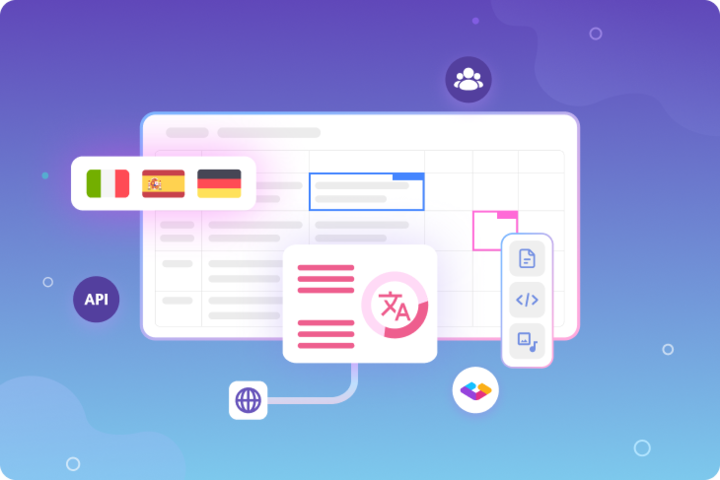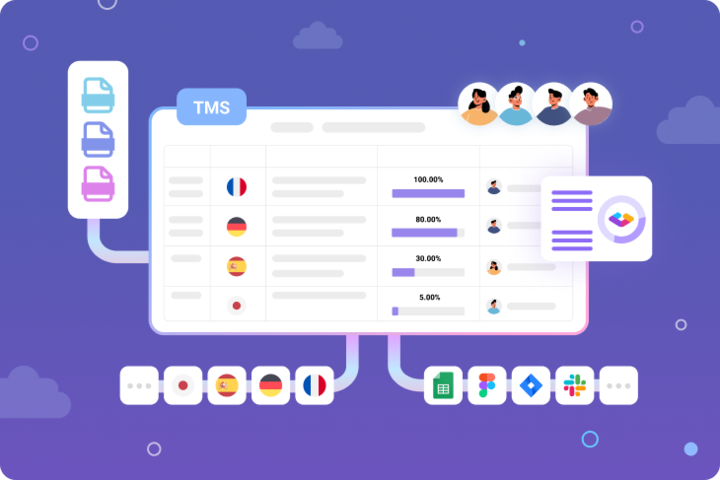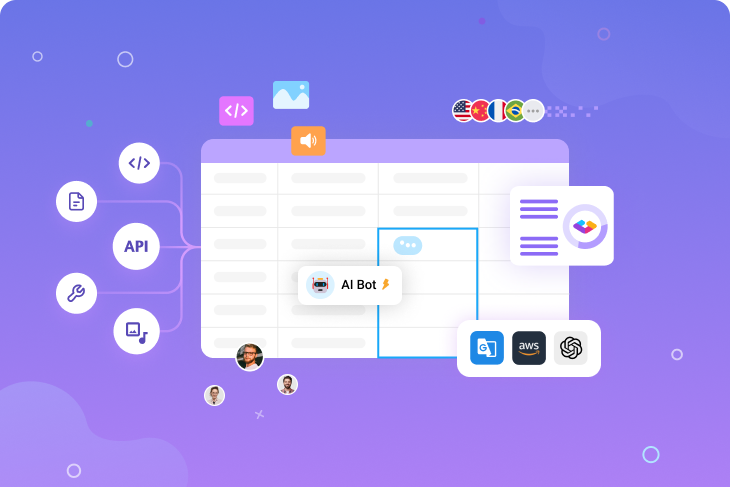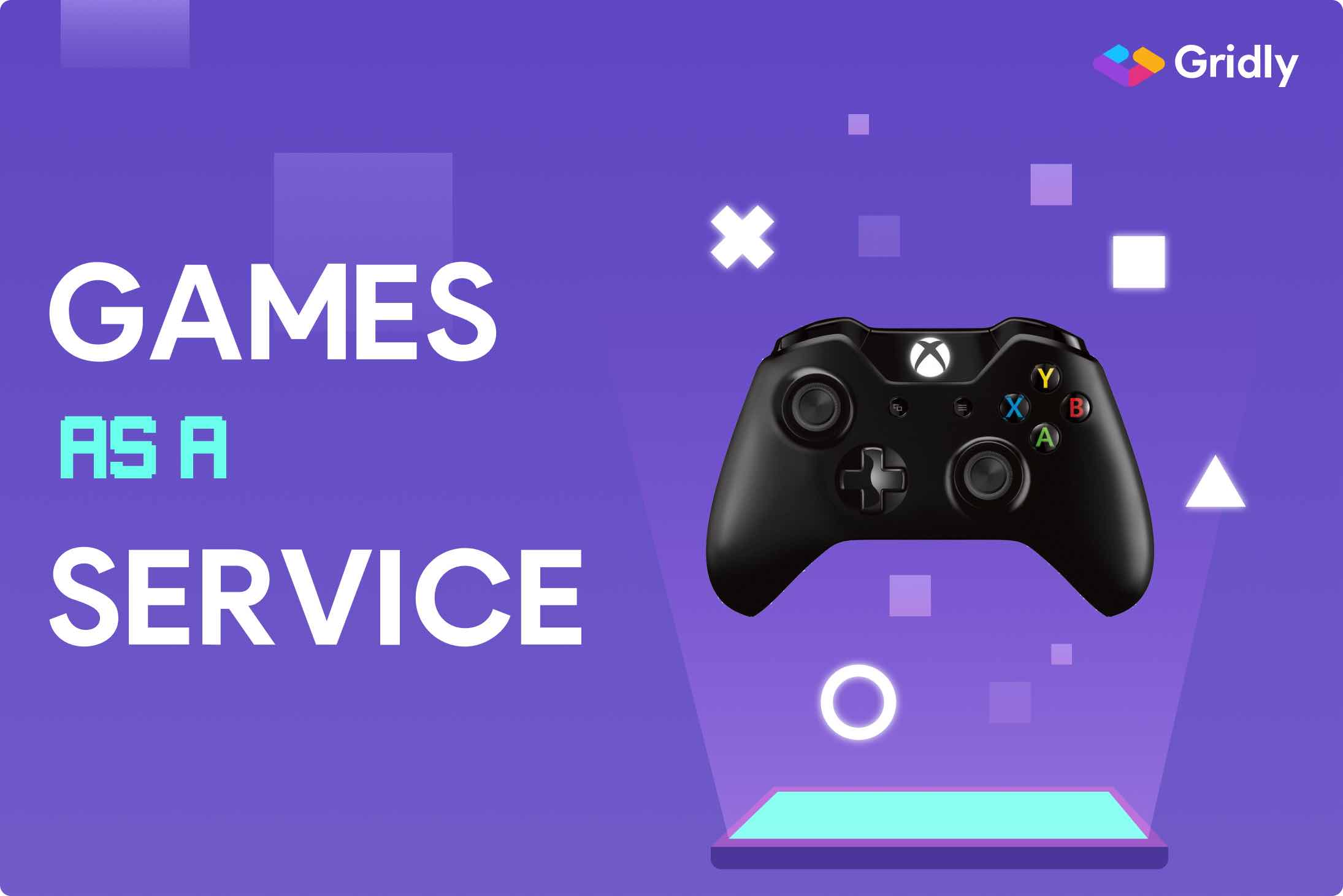Extracted from a webinar that can be found on Youtube, this blog post serves as a comprehensive recap.
Varied exchange files practices: A barrier to a lean process
Belka Games comprises 350+ employees dedicated to managing three mobile game titles that serve one million daily users. Along with these and further upcoming releases, all mobile game localization projects are overseen by Denis Ivanov, the head of the Localization department.
Denis collaborates with two mana gers, and together, the team of three engages with various contractors, including freelancers and localization studios, to ensure the comprehensive localization process for these game titles.

Before the team adopted the current process, the file exchange process varied depending on common practices shared within the team working on each localization project. The team used a CAT tool within the company, as well as Excel files or Google Sheets when collaborating with freelancers and contractors.
They extracted the text from the CAT tool, input it into a Microsoft Excel file, and then shared it with the contractor through Slack. Upon receiving the file from the contractor, they saved it on the manager’s device and transferred it back to the CAT tool. Consequently, this localization process caused difficulties for those working on the project.

A unified process, but still perplexing the localization team
As a localization team lead, Denis continues to work on building a unifying process, starting from selecting a contractor based on the results of the localization qualifying test to choosing tools and software to optimize operational costs and ensure the smooth flow of the entire workflow.
Learn the best practices for building a game localization process
Upon the transition, the Belka Games team switched from working on Excel files to using Google Sheets. Initially, this change was a breath of fresh air. Google Sheets proved to be fast and, importantly, free. The unique localization kits were consequently built around the use of Google Sheets.
However, the use of Google Sheets soon revealed its limitations.
In one project for the game title “Clockmaker,” the team placed texts in one localization kit and texts for bundles and LiveOps in another. As a result, they frequently felt disoriented, particularly during LQA testing.
When the contractor discovered a bug in a key, the team had no idea where the key was stored. Similarly, if the contractor found text errors, the team wouldn’t know where to locate the corresponding text. The challenge intensified when dealing with Japanese or Korean language text, with which the team was not familiar.
Solitaire - another game title proved to be an even greater challenge. Denis’ team used one loc kit as a draft, where texts were broken down into versions. The second loc kit held the final texts, and the third was for bundles with LiveOps.
Correcting any text in this process would potentially create chaos. Denis and the team had to address issues in the draft and both final versions, all while maintaining consistency and embarking on a meticulous search to identify and rectify all lines containing identical text.
The team also found it challenging to ensure the consistency of all game terms. Occasional human errors could lead to chaos in Google Sheets. Since too many teams had access to the texts, the system didn’t provide a way to restrict access.
As the challenges escalated, especially in projects involving the coexistence of different localization kits, Denis and the team began searching for features that were absolutely essential for comfortable and accurate localization. Unfortunately, the current workflow in Google Sheets fell short when addressing the complexity of the localization process. All these struggles made Belka Games’ team to search for a solution that provides:
- Automation tools
- Better access controls
- A custom UI
- A more straightforward way of tracking changes
- Translation memory
- A built-in glossary
- Machine translation capabilities
- Automatic QA and LQA checks
A transformation unleashes efficiency for localization workflow
After trying out a few CAT tools suitable for localization project managers but not for anyone else, Denis turned to Gridly due to its UI, which is similar to Google Sheets. This allowed the localization team to quickly adapt to the new processes with the required features mentioned above.
A game-changing transition
To facilitate the transition from Google Sheets to Gridly, Denis highlighted key experiences for the entire team, viewed from the perspective of a localization lead:
-
Learn the basic components of a Grid to establish the entire infrastructure in Gridly, including creating projects and databases.
-
Transfer the glossary using Gridly’s built-in glossary function.
One important note from Denis is that creating a glossary and transferring all the terms from Google Sheets into Gridly should be done before setting up Grids and transferring the texts. This practice saved Denis’s team a great deal of time in the second transition process compared to their first transition. -
Clarify logical tasks for developers, such as understanding how to work with the API.
At this stage, Denis and his team introduced the concept of creating statuses, which they currently use to monitor the translation and testing stages. -
Establish access to Gridly with the system administrators, distributing credentials to everyone working with texts and translations.
One important note from Denis is that creating a glossary and transferring all the terms from Google Sheets into Gridly should be done before setting up Grids and transferring the texts. This practice saved Denis’s team a great deal of time in the second transition process compared to their first transition. Access for QA specialists was restricted, while full access was granted to developers, enhancing security. Business development, marketing, and project managers were completely blocked from making edits.
Based on Denis and the team’s experience, 4 noticeable features in Gridly could play a game-changing role, and localization specialists should invest time in learning them:
-
Branch creation: Testers can now separate changes from different sources, which is a lifesaver when working on multiple significant localization projects simultaneously.
-
Customizable Views in the Grid system: This allows the localization lead to restrict access to certain Views and columns, ensuring each department sees only what’s relevant to them. This results in fewer people able to edit the text, reducing typos and human errors.
-
Screenshots: It is easy to capture screenshots with highlighted text and send them directly to Gridly.
-
Built-in translation memory and glossary: The system automatically inserts text if it has been translated before, helping the team maintain consistency in their texts.
Furthermore, there are some additional tips that Denis highly recommends from his own experience to help the entire localization team take full advantage of Gridly.
-
Settle on a grid template that would serve as the basis for creating other grids, as manual edits would be required in the created grids.
-
Include the functionality for pulling screenshots from Unity into Gridly as an improvement rather than in the initial iteration of the transition. This ensures that the focus remains on the migration process itself, which is more time-consuming and critical.
-
Work in separate branches instead of a single branch. It was discovered that relying solely on the QA Verified status could lead to issues if someone were to change that status, causing the status and corresponding texts not to be pulled. One branch would serve as a draft, while the other would only contain QA Verified or Disabled statuses that cannot be changed.
-
Maintain separate translation memories for each project to prevent legacy issues from impacting one another.
-
Create a separate view for character limit monitoring, allowing for real-time tracking of the current character count. This is particularly crucial for UI designers and narrative designers.
-
Divide your grids into multiple databases within the project. This will make it easier for you to navigate Gridly and keep your texts organized.
-
Create statuses for each stage in your localization pipeline. This will make communication easier and help you understand what stage each line is currently at.
Developers freed up from routine work
As a result, the development and testing process improved significantly. Denis and the team no longer have to wait for builds to compile, can compare multiple localized files, and benefit from a locale validator for additional checks.
According to Denis, the flow hasn’t changed much. The only difference is that instead of bugging the developers every time there were bugs or edits, the Localization Manager and QA team now handle it together. This frees up the developers from routine work and optimizes their processes.

Important factors for a successful mobile game localization strategy
From Denis’s experience, in addition to a video game localization tool like Gridly, there are several factors that contribute to a successful game localization strategy. These include technical preparation, language selection, a lean team with effective processes, and localization quality assurance.
Technical preparation
In ensuring a smooth game localization process, technical preparation is paramount. Key considerations that Denis mentioned include:
- Ensure Unicode support in the engine
- Centralize storage for language-specific assets
- Implement unique string IDs
- Avoid combining two separate text strings
- Incorporate bidirectional text support in the engine
- Opt for easily readable fonts
- Enable scalable UI for longer translations
- Implement game code for displaying text in images
Choosing the Right Language for Localization
Belka Games initially focused on English and major European languages such as French, German, Spanish, and Italian before expanding globally and supporting Simplified Chinese, Korean, and Japanese because these languages cover the largest and most profitable markets.
In addition to these prominent languages for game localization, Denis also recognizes the significance of aligning the budget with the value that the target market can bring.
Denis notices that localization efforts might go unnoticed if the region’s proficiency in English is high. He also recommends collaborating with App Store Optimization specialists to test translations in app stores, evaluating the performance of titles, descriptions, and screenshots to make informed decisions.
Build effective processes: Fewer people–more clarity
From Denis’ experience, try to involve as few employees as possible in the localization pipeline. Also, it is desirable to minimize the developer’s involvement in this process as much as possible, as they are among the company’s highest-paid and most efficient employees.
At Belka Games, a unified localization process has been implemented for all projects. The localization manager and QA handle most of the work in this process, while the developer only needs to perform one step: initial localization key pulling.
Run localization quality assurance (LQA)
Screenshots are a great reference, but they are not always enough, according to Denis. During the localization tests, native speakers can feel and experience the game. These people can find truncations, incorrect line breaks, and non-consistent terms.
Learn more about effective localization quality assurance
Denis and his team’s insights in platform selection, focus on localization features, and consideration of other key factors provide a solid foundation for success in mobile game localization. Initially, Denis’ team was inclined to revert to the previous approach, but now, the feedback is consistently positive. The thorough implementation of these factors has significantly simplified the localization process.
Interested in learning more about localization for your mobile game? Sign up for a 14-day free trial with Gridly today.










